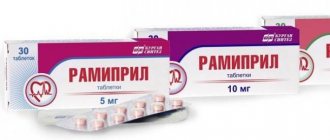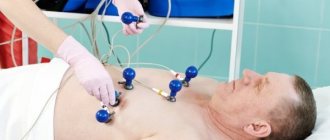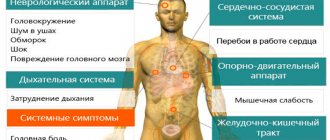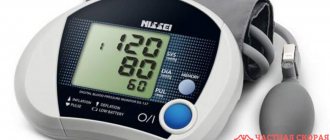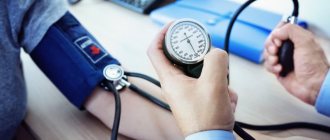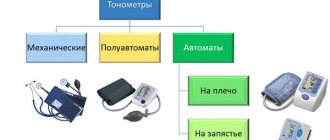Increased blood pressure in a healthy person is a natural reaction to stress and physical activity. A problem is indicated if, after three control measurements, the blood pressure exceeds 140/90. Then the most likely diagnosis is hypertension.
For most people, the disease does not produce symptoms, hence its second name: the silent or invisible killer. The first symptoms appear when the body ceases to independently withstand such a load and critical changes occur in the blood vessels. The first signs are:
- Increased anxiety.
- Cardiopalmus.
- Facial redness.
- Shortness of breath and dizziness.
- Headache and feeling of pressure in the temples.
- Chest pain in the region of the heart.
- Visual acuity decreases.
Fatigue, similar to the onset of a cold, is also a characteristic symptom. Accompanied by redness of the eyes, drowsiness and irritability. If the pressure approaches the extreme level, this is a reason to consult a doctor.
High blood pressure is divided into two categories: primary (essential) hypertension and symptomatic. The first is a chronic process, which is characterized by constant high blood pressure. The second is a symptom of other diseases of the human body.
When to worry about blood pressure
A slight short-term excess of normal blood pressure is typical for many during physical activity and stressful conditions. This physiological reaction of the heart and blood vessels is considered normal if the indicators return to normal within 30 minutes of rest and do not lead to a deterioration in well-being. The so-called white coat syndrome—excitement at the moment of measurement with a tonometer—also plays a role. Stress hormones contribute to a proportional increase in systolic and diastolic pressure by about 10 units. Severe fever with high body temperature also provokes an increase in blood pressure values.
If such deviations occur occasionally, without causing significant symptoms, you don’t have to worry. For young healthy people, it is enough to check the indicators once every 4-5 months. After 40 years, it is recommended to do this more often: every month and with any deterioration in physical condition.
A persistent increase in blood pressure is indicated if blood pressure levels cross the 130/90 mark regularly. And often recorded such results are a reason to suspect a chronic health disorder. It is especially important to control blood pressure for people at risk:
- overweight;
- with diagnosed heart pathologies;
- with weather sensitivity;
- with high levels of cholesterol, blood sugar;
- smoking and drinking alcohol;
- those who are over 50 years old.
Normal blood pressure indicators
Normal blood pressure in men depends on age. Different age categories have their own norms:
- at the age of 18 - 35, the systolic value is 115 - 125 mmHg, diastolic pressure should be within 75 - 85 mmHg;
- at the age of 40 – 50 years, the upper value can reach 135 mmHg, and the lower value – 90 mmHg;
- after 50 years, the normal pressure is 140 to 90 mmHg.
The older the man, the higher the normal blood pressure. This is due to the natural wear and tear of internal organs, aging of the body, and prolonged exposure to provoking factors.
Symptoms and causes of high blood pressure
Pathological hypertension at the initial stage practically does not manifest itself at all or is disguised as signs of fatigue:
- Patients do not tolerate heat and stuffiness well;
- their pulse periodically increases and tachycardia occurs;
- attacks of headache occur with a feeling of pounding in the temples.
With very high tonometer readings, physical weakness, poor coordination of movements, a sharp bursting headache, visual disturbances, and shortness of breath are characteristic. Such conditions can persist for several hours and do not go away on their own, requiring urgent medical correction.
- The most common cause of high blood pressure is primary hypertension. Vascular pathology develops in a chronic form and progresses over time. Its main symptom is a proportional persistent violation of blood pressure. The first stage of the disease lasts asymptomatically; over the years, the condition without drug correction can lead to a heart attack or stroke.
- Cardiovascular pathologies. With atherosclerotic lesions of large vessels, an increase in upper systolic pressure is characteristic. In this case, the indicators on the left and right hands may differ.
- Kidney disease is another common cause of hypertension. The retention of salts and water in the body increases the total volume of fluid and the load on blood vessels. A characteristic sign is the lower indicator - diastolic pressure is usually higher, and systolic pressure may differ little from the norm. Renal hypertension occurs in older and younger people. It can be genetically determined, or develops due to functional disorders, damage or inflammation of organs.
- Severe menopause. In some women, menopause is accompanied by severe hypertension due to hormonal changes: a decrease in estrogen levels.
- Thyrotoxicosis. Disorders of the thyroid gland with an increase in hormone production causes systolic hypertension, and the lower value remains normal. The condition causes a number of characteristic symptoms: irritability, weight loss, insomnia, tremor.
- Pregnancy gestosis. A specific problem that occurs in the later stages. Stress on blood vessels is caused by swelling and hormonal changes. The pressure rises to alarming levels, which can be life-threatening.
- Side effect of taking medications. Therapy with glucocorticoid hormones, painkillers, antidepressants and other groups of drugs often causes an increase in blood pressure. Usually, at the end of the course it normalizes on its own.
In case of hypertension, there are also tumors of the adrenal glands, pituitary gland, and acute intoxication with certain chemicals.
Risk group
Regular high blood pressure occurs more often in men than in women. Arterial hypertension develops at any age. If previously elevated blood levels were found in older people, today young men aged 20–30 years are increasingly turning to the doctor. Reducing the age of the disease is associated with a fast pace of life, poor diet, and stress.
The earlier hypertension develops, the more difficult it is to tolerate. The risk group includes men who lead an unhealthy lifestyle, are obese, smoke, abuse alcohol and neglect physical activity. Most often, high blood pressure occurs in men with a hereditary predisposition.
Regular high blood pressure is more common in men than in women
FAQ
Do they take you into the army with hypertension?
A decision on this issue will be made at the medical examination of conscripts. But you need to notify the doctors conducting the examination about your illness and have a document with you confirming the diagnosis. If the disease progresses, complete or temporary medical withdrawal or alternative service is possible.
How do I know if I have hypertension?
The main symptom of the disease is an increase and persistence of high blood pressure with a simultaneous sharp deterioration in health, headaches, nausea, rapid heartbeat, etc. Even a rare repetition of such cases should be a reason to consult a doctor. The final diagnosis can be made only after a full examination of the patient.
Drug therapy
Drug therapy is the main method of treating high blood pressure in men. Medications for high blood pressure are prescribed by the attending physician based on tests, diagnosis, and the root cause of the disease.
To treat high blood pressure in men, the doctor prescribes antihypertensive drugs, drugs with a sedative or diuretic effect. The most popular drugs for the treatment of hypertension:
- sartans: popular tablets that lower blood pressure for 24 hours, among them Valsartan and Losartan;
- diuretics Indapamide, Hypothiazide: diuretics remove excess water and sodium from the body, lowering blood pressure;
- angiotensin-converting enzyme inhibitors Zocardis, Capoten, Renitek normalize blood circulation and dilate blood vessels;
- blockers of slow calcium channels Amlodipine, Verapamil are prescribed to patients with disturbances in the functioning of the heart;
- other antihypertensive drugs are prescribed to normalize the functioning of the circulatory and cardiovascular systems.
When using medications, you must strictly follow the treatment regimen prescribed by your doctor. You cannot change the dosage, frequency of administration or general therapy on your own.
High blood pressure can trigger the development of a hypertensive crisis. During a hypertensive crisis, the patient requires potent drugs:
- Atenolol;
- Captopril;
- Nifedipine;
- Esmolol.
If you consult a doctor for help in time, you can avoid the development of hypertension and severe consequences of the disease. You should not self-medicate or take medications without a doctor’s prescription.
If your blood pressure is very high, you can take Nifedipine tablet before the ambulance arrives.
Methods for treating hypertension
Treatment tactics are selected depending on the patient’s age, the degree of development of the disease, the causes of signs of hypertension, etc.
- Conservative treatment with drugs that stabilize blood pressure. The course lasts up to several weeks and is carried out under the supervision of a specialist.
- Non-drug treatment. This means a special diet for hypertension in order to reduce calorie intake, therapeutic exercises and physical exercise. Also, clinical recommendations for arterial hypertension include correction of the drinking regime, reduction of salt consumption, methods of psychotherapy and stabilization of the patient’s psycho-emotional state.
Infections
Some infectious diseases occur with virtually no symptoms, and their manifestations can easily be attributed to poor health associated with blood pressure. For example, if you are infected with the herpes simplex virus, cytomegalovirus, or Epstein-Barr virus, you may experience weakness, chills (due to a slightly elevated temperature), and pain in the head and muscles.
If it really was the herpes simplex virus, then within a day or two you will notice a rash on your lips (or on your genitals, in the case of genital herpes). With other infections, there may be no external symptoms at all, so the cause of the lethargic state will remain a mystery for a long time.
So those who have been tormented by symptoms of “pressure” for a long time, but motherwort and coffee do not help, should get tested for hidden infections.
Methods for diagnosing hypertension
The basis of diagnosis is monitoring the patient at home after exercise and in a state of physical rest using pressure gauges. In addition, the following results allow us to talk about arterial hypertension:
- recording risk factors;
- 24-hour blood pressure monitoring;
- electrocardiograms;
- conclusions of a nephrologist, endocrinologist and neurologist;
- blood and urine tests;
- Ultrasound of the kidneys and heart;
- chest radiographs.
Characteristic signs of arterial hypertension
At first, arterial hypertension does not manifest itself in any way. The disease can develop asymptomatically, so a man goes to the hospital at a late stage of the disease. Failure to go to the hospital in a timely manner leads to the development of severe complications due to hypertension, so doctors recommend recording any changes in the condition so as not to miss signs of high blood pressure.
The first symptoms of high blood pressure in men are disturbances in the functioning of the heart, a feeling of nausea, headache, but gradually the condition worsens, new signs of the disease are added.
The main symptoms of high blood pressure in men:
- pain in the heart area;
- severe headache in the temples, back of the head;
- weather dependence;
- dizziness;
- vestibular disorders;
- loss of consciousness;
- black spots before the eyes;
- heart rhythm disturbance;
- increased heart rate;
- fever;
- hyperhidrosis;
- facial hyperemia;
- cold extremities.
If these symptoms appear frequently, you should consult a doctor who will conduct a comprehensive examination, determine the degree of development of the pathology, take an anamnesis and identify pathogenesis. Based on the data obtained, the doctor will draw up a treatment plan. If you ignore the symptoms of hypertension, the condition can worsen sharply, and death is not uncommon.
A man needs to pay attention to frequent headaches
Dangerous consequences of hypertension
High blood pressure in old age and in young men is a dangerous condition that can cause severe complications. Serious pathologies develop against the background of arterial hypertension:
- impaired blood flow, decreased blood supply to the legs - intermittent claudication develops;
- high pressure readings have a bad effect on the functioning of the heart and blood vessels; due to high pressure, the heart works harder, blood circulation is impaired, a person may cough up blood, limbs begin to swell, and respiratory failure develops; in this condition, the help of a doctor is required, since the lack of therapy can cost the patient’s life;
- high blood pressure affects brain function: a man may develop acute cerebrovascular accident, hemorrhage in the retina, and the person may go blind or temporarily lose vision.
High blood pressure has a bad effect on the functioning of all internal organs and tissues. If your blood pressure increases, you should consult a doctor to get quality treatment.
Hypertension affects all organs
Reason to panic
With a regular increase in readings to 140 by 90 mm Hg. The doctor often diagnoses hypertension. It is necessary to undergo a general diagnosis, identify the causes of the development of pathology, and determine the symptoms. If the condition worsens or the readings on the tonometer increase to critical levels, you must call an ambulance.
When the readings increase to 150 per 100 mmHg. Art. An ambulance should be called immediately. The age of the man does not matter. This condition may signal the development of a hypertensive crisis; it is imperative to lower the blood pressure in order to prevent the development of severe complications.
To monitor blood pressure levels, you should buy a mechanical or automatic blood pressure monitor. If you are diagnosed with arterial hypertension, you need to keep a notebook and regularly record your daily readings in it. Blood pressure should be measured 2–3 times a day.
